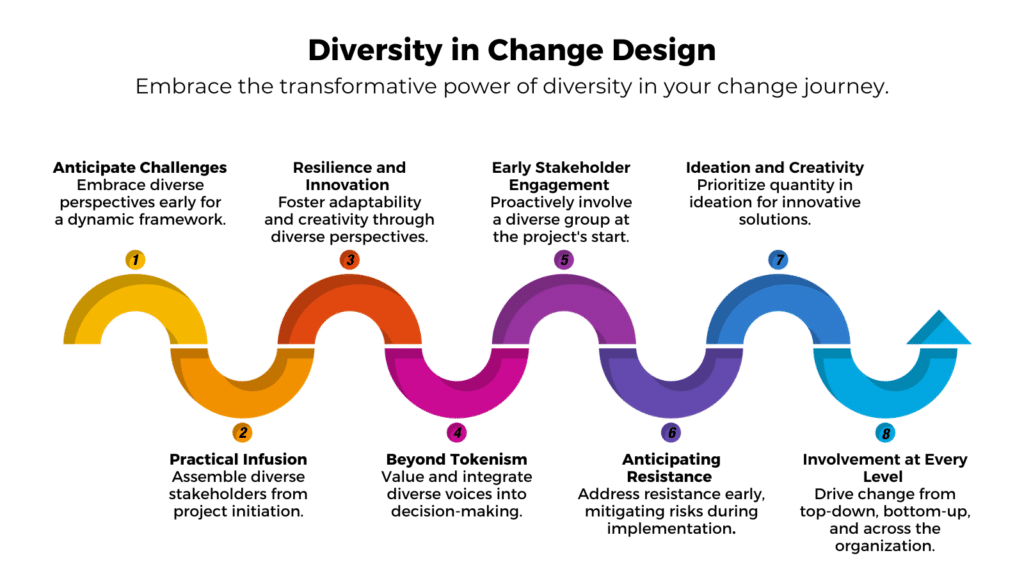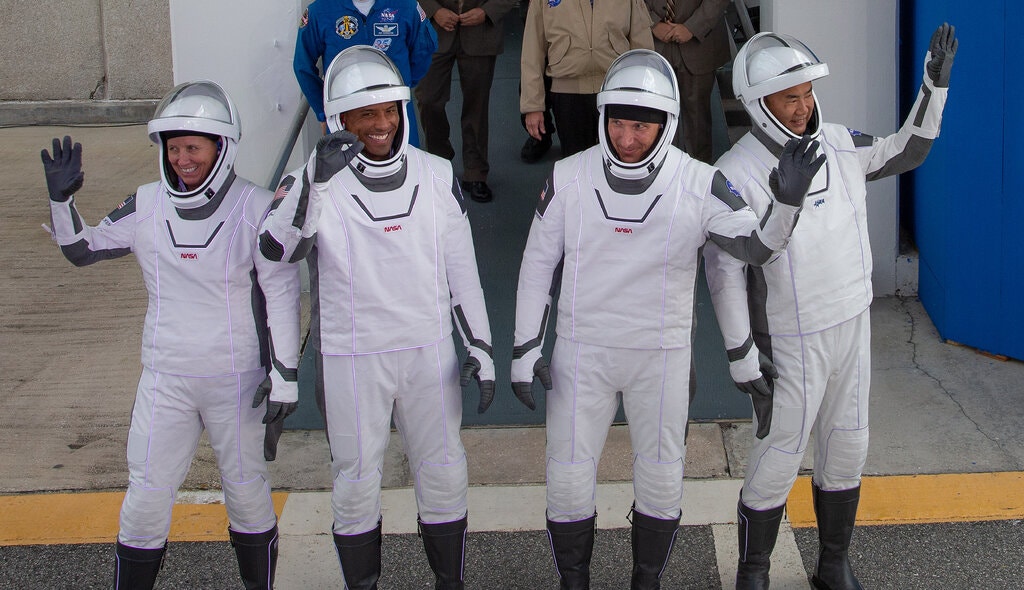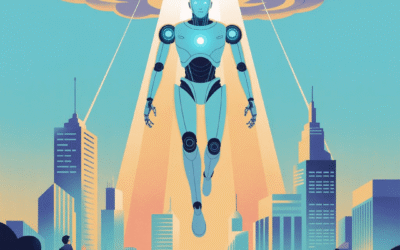At the time of the article Space X ‘Resilience’ (name of the shuttle) successfully took off into space with 4 astronauts. The astronauts wore super sleek white costumes that were tapered to the body and minimalist in design. They look quite different than the bulky spacesuits that we are all accustomed to in our heads from the 60s. What stood out for me was that this was a diverse team of astronauts. There was 1 female, 1 black, and 1 Asian. This was definitely not the all-white Caucasian males we are used to seeing in the past. It made me ponder about diversity and the change journey that companies are driving.
We all know the drill with most change journeys. It ‘must’ start at the top. It needs to be driven by senior managers. Then the rest of the managers need to support it and convince their people about the change journey. So what is wrong with this? Well, we also know that things often don’t go according to plan. Employees may ‘resist’ the change. They would then be labeled as ‘resistors’. The change manager on the project will then need to devise a plan to deal with these resistors to ensure the change goes smoothly despite them.
Diversity in Change Design
Anticipating Challenges: The crux of this transformative approach lies in its foresight to identify potential challenges before they materialize. Incorporating diversity early in the change design process constructs a dynamic framework that embraces myriad perspectives, experiences, and insights.
Practical Infusion of Diversity: Effectively infusing diversity into change strategies demands a conscious effort across dimensions. Assembling a diverse team of stakeholders from the project’s initiation ensures representation from various facets of the organization.
Shaping Resilience and Innovation: The primary objective is to cultivate resilience and innovation through intentionally incorporating diverse perspectives. Research consistently highlights the adaptability of diverse teams in facing challenges, tapping into a reservoir of creativity born from collaboration among individuals with varied backgrounds.
Beyond Tokenism: Infusing diversity transcends token gestures; it’s about creating an environment where diverse voices are not only heard but also valued and integrated into decision-making processes.
Early Stakeholder Engagement: Adopting an agile mindset, organizations should proactively assemble a diverse stakeholder group at the project’s inception, ensuring early engagement and integrating a broad spectrum of perspectives.
Anticipating Resistance and Brainstorming Solutions: Diversity in stakeholder engagement empowers organizations to interact early, identify potential push-backs, and collaboratively brainstorm solutions. This proactive strategy addresses resistance at its roots, mitigating risks during the implementation phase.
Ideation and Creativity: Inspired by Ideo’s principles, the ideation stage prioritizes quantity over the quality of ideas. Encouraging creativity without premature judgment recognizes that innovation often emerges from seemingly unconventional ideas.
Involvement at Every Level: Moving beyond the traditional top-down approach, organizations should envision change being driven from top-down, bottom-up, middle-out, and across every layer of the organizational hierarchy.
Challenges and Solutions: In the landscape of change, integrating diversity can encounter hurdles. A common challenge surfaces in the form of resistance, where employees perceive diversity initiatives as superficial. To overcome this, fostering open communication is vital. Actively involving employees in the change process not only allows them to voice concerns but also instills a sense of ownership and alignment with the change goals.
Another challenge lies in aligning diverse perspectives cohesively, which may lead to ambiguity or conflicting goals. This calls for robust communication channels and cross-functional collaboration. Encouraging a dialogue that integrates different viewpoints ensures a unified vision that accommodates the richness of diverse perspectives.
Measurable Outcomes: Embracing diversity in change design yields measurable outcomes. Teams reflecting diverse backgrounds consistently showcase heightened innovation and problem-solving capabilities. This innovation often translates into quantifiable improvements in product development, process efficiency, and overall organizational performance.
Measurable outcomes extend to employee engagement and satisfaction. Organizations fostering diversity experience higher levels of employee morale and commitment quantified through employee surveys, retention rates, and increased productivity. These metrics form a compelling narrative for the strategic value of diversity in driving successful change.
As we conclude this exploration into the transformative power of diversity in organizational change, it’s clear that diversity is more than a checkbox—it’s a dynamic force shaping the future of successful change management. The ‘Resilience’ shuttle journey serves as a metaphor for the resilience and innovation that embracing diversity brings to organizational journeys.

In essence, diversity propels change beyond resistance, transforming it into a collaborative, inclusive, and innovative process. The ‘Resilience’ shuttle journey serves as a metaphor for successful organizational change. Embracing diversity in change design is not merely a philosophical stance but a practical imperative. By incorporating diverse perspectives early on, organizations proactively navigate challenges, foster innovation, and drive transformative change from all directions.
As you embark on your change journey, remember that diversity is not just a strategy—it’s the cornerstone of lasting, impactful transformation.
Embark on a Diverse Journey with The Change Compass! Discover how our platform empowers you to embrace diversity in your change initiatives. Book your weekly demo now.






